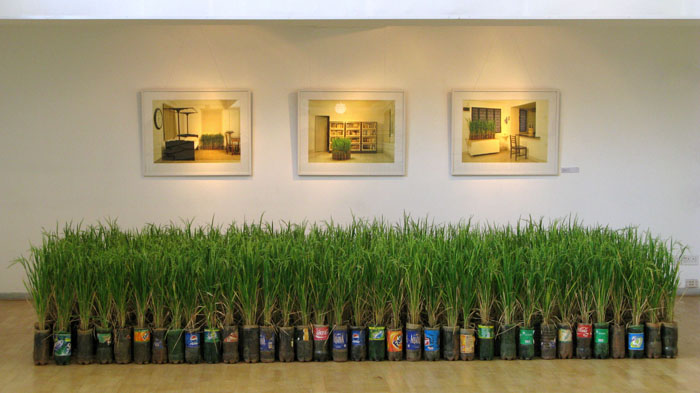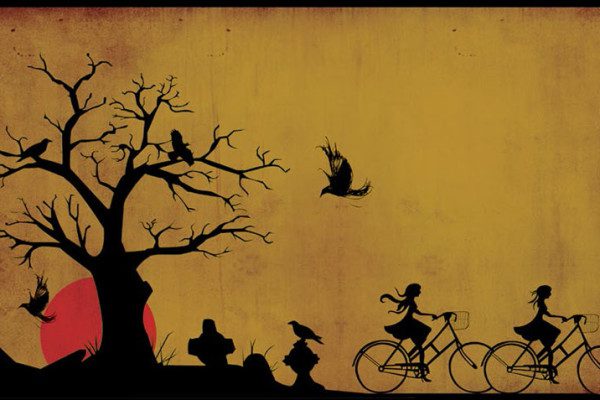Sunoj D, with his Masters in Print Making, enjoys exploring the dynamics between individual and the group identity in the socio-political settings. His recent work is inspired by his move from a village to a city, from a house surrounded by paddy fields to ultimately an apartment. Broadly, this work examines the changing quality of man’s relationship with nature, while acknowledging the abiding connection between the two. The encroachment of the urban on the rural and agrarian is noticed, but not necessarily lamented. Instead, attention is drawn to the inexorability of nature – how it underlies human life and coexists with it.
My grandfather was a rice farmer in Kerala. Growing up in the same household with him, I became very familiar with the process of paddy cultivation. When I moved to the city, the entire process of watching my food grow, ended for me. I was still eating rice every day, but no longer breathing in the smell of the paddy fields.
Initially, I just wanted to experiment with growing paddy and see if the process was possible in an urban context. I started with twelve 2-litre soft drinks and mineral water bottles. I increased it to 500 bottles, to make it more like a larger field. The first time when the plants were nearly ready to harvest, dozens of sparrows, a species that is almost non-existent in Bangalore, came to the terrace where the bottles were kept and ate the entire paddy. It took 120 days for the plants to be ready for cultivation and for that duration, they needed constant, intense care. Some of the plants began to show signs of disease, so I consulted with farmers I knew as to what could be done. So it was almost like cultivating a farm for that period.

The Urban Farmland Project(2010)was about recreating farmlands in urban spaces. The context was a worrying global scenario where the pervasive city is trampling upon and uprooting rural landscapes, thus making visual, spatial and lifestyle changes in how people, live, grow and eat.
Through the experiment, farming became an element of design and transformed the urban living space. When the rice plant becomes equivalent to a house plant, a relationship is forged with the crop and its harvest, even in an absence of open land.
Every day, over 2,000 farmers give up farming as their ‘main occupation’ in India. The agrarian crisis gets an impetus every day from expanding cities and rural-to-urban migrations.
My preoccupation is with the visible loss of farmland to urban development and with it the implicit loss of man’s relationship with land, harvest and cultivation. I try to mull on the kind of relationships that can be forged with land, in spite of being uprooted from it, thereby redefining what land and farming could mean in an urban context.


